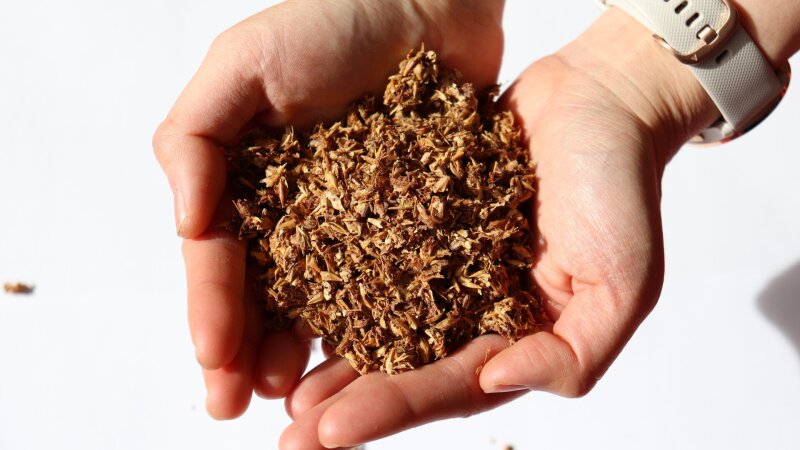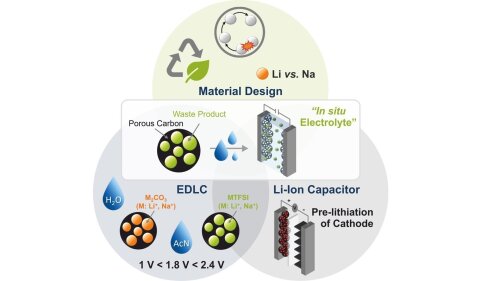"Novel in situ electrolyte for supercapacitors." The project deals with porous activated carbons, which are intended to make by-products of material synthesis usable as a component of the electrolyte. Specifically, these contain salts that form the electrolyte in-situ in the electrochemical cell when the electrolyte is added. Funding: German Research Foundation (DFG)
Project duration: 2021 - 2025
Carbonaceous Materials for Use in Energy Storage Systems
Hands holding brewer's spent grains.
Image: Christian LeibingA variety of materials can be considered as precursors for carbons that can be used as electrode materials in electrochemical double-layer capacitors (EDLCs) and alkaline metal ion batteries. However, a sustainable approach that can also be realised on a large scale is linked to a number of requirements for the potential new starting materials. For example, the latter should be inexpensive and available in sufficient quantities, consist of renewable resources, be inexpensive to process and have attractive electrochemical properties. In line with these ideals, we were able to produce activated carbon and hard carbon (amorphous, non-graphitisable carbon) from spent grains, which are a waste product of the brewing process. Brewer's spent grains consist largely of cellulose, hemicellulose and lignin and were produced in an estimated 1.5 billion tonnes (wet state) in Germany alone in 2019. The activated carbon synthesised from this for use in EDLCs has a specific surface area of 3600 m2 g -1 and is characterised by a hierarchical pore structure. These properties result in a high capacity of 46 F g -1 on the one hand and good performance at high current rates on the other, as the pore structure offers good requirements for the transport of charge carriers.
In contrast, hard carbon can be used as a material for the negative electrode in alkali metal ion batteries. The material produced by us using an energy-saving one-step synthesis at a comparatively low temperature can be used in lithium, sodium and potassium ion systems. In the case of lithium, it has a specific capacity of 612 mAh g -1, which is significantly higher than the theoretical capacity of graphite, which is used as standard in commercial systems. All systems share a high Coulomb efficiency of >99.6 % and therefore a good cycle stability.
By combining these materials with innovative electrolytes, sustainable and safe energy storage systems can be realised.
-
Publications
Darlami Magar, S., Leibing, C., Gόmez-Urbano, Cid, R., J.L., Carriazo, D., Balducci, A.; Brewery waste derived activated carbon for high performance electrochemical capacitors and lithium-ion capacitors. Electrochimica Acta 2023, 446, 142104.
Darlami Magar, S., Leibing, C., Gόmez-Urbano, J.L., Carriazo, D., Balducci, A.; Brewers' spent grains derived carbon as anode for alkali metal ion batteries. Energy Technology 2022, 10 (9), 2200379.
-
Darlami Magar, Sandesh PhD student, Project: NIESCap Professorship of Applied Electrochemistry
Room R 129
Humboldtstraße 8
07743 JenaImage: Anne Günther (University of Jena)

